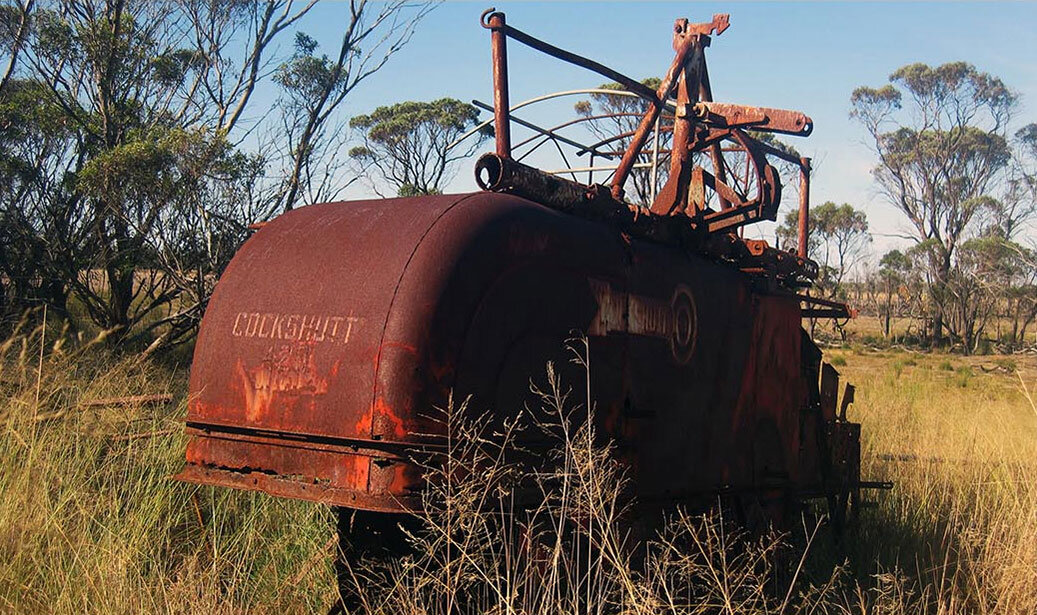



Adding to GDP, or maybe not …
What do we value? How do we measure what we value?
What do we hold from the past as we look to the future?
The Cockshutt Self-Propelled Harvester Combine was built in the 1950s for the prairies of Canada – flat country with no stumps and rocks. On its arrival in WA, the combine was used to harvest crops in the wheatbelt.
I came to know the Header when my family – broke – bought it second-hand in the 1960s to work our new cleared farm on the south coast. By then, the bright red paint was flaking and fading to a dull salmon colour. The sheet steel, welded to a galvanised angle iron structure, couldn’t cope with the rough country strewn with stumps and coffee rock. To get by, we bought a second identical machine and stripped it for parts. This kept our first harvester going … for a while.
By the mid-70s, the Cockshutt was retired to the machinery graveyard. For the next forty years, it sat undisturbed, continuing to rust, fade and meld back into the land.
Several years ago, I angle ground some sheet metal off the Cockshutt. Shortly afterwards, the graveyard disappeared – all the machines were flattened and sold for scrap. The family stories embodied in the rusty header and the other machines were suddenly, less potent.
What is left – the angle ground metal – exists in its final, unique state. In this state the metal holds stories of a family, repeated journeys on land, and speaks of a close relationship to country. It also reveals its own material life. On the surface the metal is brittle and flaking to touch. But when cut the more solid pieces reveal the silver core of new minted metal that is over eighty years old.
To make these works, I have begun cutting and reassembling the metal, making forms that allude to the metal’s past life and inform its new life as art works. Because there is so little metal remaining, I have committed to work sustainably, and use everything, even fragments – and to record the ‘state’ of the metal with indexical mark making.
The metal has been cut and is divided into nine distinct groups – long strips 35mm wide; smaller strips 15mm; short, uneven off-cut strips;
trimmed slithers; rust blobs and powder that fragmented during cutting.
Each group will be used to make distinctive works.
Left: Top view, metal group 2 from the series, Adding to GDP or maybe not ... (2022), frottage, stitching on canvas, 1000 x 485 mm.
Middle: Metal group 2 from the series, Adding to GDP or maybe not ... (2022), rusted iron, stitching, muslin, ground coffee rock, soil and charcoal, oil paint on plywood, 1000 x 340 x 35 mm.
Right: Bottom view, metal group 2 from the series, Adding to GDP or maybe not ... (2022), frottage, stitching on canvas, 1000 x 485 mm.
Metal group 2
Photographs: Valdene Diprose









